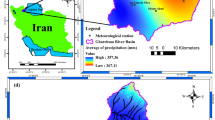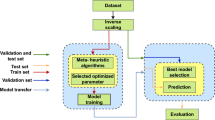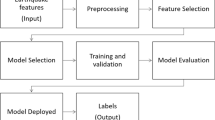Abstract
An advanced artificial neural network classification algorithm is applied to 18 years of gridded mean geostrophic velocity multi-satellite data to study the Kuroshio intrusion into the South China Sea through the Luzon Strait. The results suggest that the Kuroshio intrusion may occur year round. However, intrusion is not the major characteristic of the region. The intrusion mode occurs only 25.8 % of the time. Winter intrusion events are more frequent than summer events. Both stronger intrusion (which is related to wind speed) and weaker intrusion (which may be related to the upstream Kuroshio transport) may occur during winter, but stronger intrusion is dominant. In summer, the Kuroshio intrusion is almost the weaker type. The Kuroshio intrusion through the Luzon Strait usually occurs when the Pacific decadal oscillation index is positive (72.1 % of the time). This study shows that growing hierarchical self-organizing map is a useful tool for analyzing Kuroshio intrusion through the Luzon Strait.






Similar content being viewed by others
References
Andres M, Park JH, Wimbush M, Zhu XH, Nakamura H, Kim K, Chang KI (2009) Manifestation of the Pacific Decasal Oscillstion in the Kuroshio. Geophys Res Lett 36:L16602. doi:10.1029/2009GL039216
Caruso M, gawarkiewicz G, and Bearsley RC (2006) Interannual variability of the Kuroshio intrusion in the South China Sea. J Oceanogr 62:559–575
Ceballos LI, Lorenzo ED, Hoyos CD, Schneider N, Taguchi B (2009) North pacific gyre oscillation synchronizes climate fluctuations in the eastern and western boundary system. J Clim 22:5163–5174
Centurioni LR, Niiler PP, Lee DK (2004) Observation of inflow of Philippine Sea surface water into the South China Sea through the Luzon Strait. J Phys Oceanogr 34:113–121
Farris A, Wimbush M (1996) Wind-induced intrusion into the South China Sea. J Oceanogr 52:771–784
Hsin YC, Wu CR, Shaw PT (2008) Spatial and temporal variations of the Kuroshio East of Taiwan, 1982–2005: a numerical study. J Geophys Res 113:C04002. doi:10.1029/2007JC004485
Hsin YC, Qu T, Wu CR (2010) Intra-seasonal variation of the Kuroshio southeast of Taiwan and its possible forcing mechanism. Ocean Dyn 60:1293–1306. doi:10.1007/s10236-010-0294-2
Hsin YC, Wu CR, Chao SY (2012) An updated examination of the Luzon Strait transport. J Geophys Res 117:C03022. doi:10.1029/2011JC007714
Kohonen T (1982) Self-organized formation of topologically correct features maps. Biol Cybern 43:59–69
Kohonen T (2001) Self-organizing maps. Springer Series in Information Sciences, Vol. 30, 3d ed., Springer-Verlag, pp 501
Liang WD, Yang YJ, Tang TY, Chung WS (2008) Kuroshio in the Luzon Strait. J Geophys Res 113:C08048. doi:10.1029/2007JC004609
Liu Y, Weisberg RH (2005) Patterns of ocean current variability on the West Florida Shelf using the self-organizing map. J Geophys Res 110:C06003. doi:10.1029/2004JC002786
Liu Y, Weisberg RH, He R (2006a) Sea surface temperature patterns on the West Florida Shelf using the growing hierarchical self-organizing maps. J Atmos Oceanic Tech 23(2):325–338
Liu Y, Weisberg RH, Mooers CNK (2006b) Performance evaluation of the self-organizing map for feature extraction. J Geophys Res 111:C05018. doi:10.1029/2005JC003117
Liu Y, Weisberg RH, Yuan Y (2008) Patterns of upper layer circulation variability in the South China Sea from satellite altimetry using the self-organizing map. Acta Oceanol Sin 27(Supp):129–144
Mau JC, Wang DP, Ullman DS, Codiga DL (2007) Characterizing long island sound outflows from HF radar using self-organizing maps. Estuarine Coastal Shelf Sci 74:155–165
Nitani H (1972) Beginning of the Kuroshio. In: H. Stommel and K. Yoshida (eds) Kuroshio—its physical aspects, University of Tokyo Press, 129–163
Qiu B, Chen S (2010) Eddy-mean flow interaction in the decadally modulating Kuroshio extension system. Deep Sea Res II 57:1098–1110
Qu T, Lukas R (2003) The bifurcation of the north equatorial current in the pacific. J Phys Oceanogr 33:5–18
Richardson AJ, Risien C, Shillington FA (2003) Using self-organizing maps to identify patterns in satellite imagery. Prog Oceanogr 59:223–239
Shaw PT (1991) The seasonal variation of the intrusion of the Philippine Sea water into the South China Sea. J Geophys Res 96:821–827
Sheremet VA (2001) Hysteresis of a western boundary current leaping across a gap. J Phys Oceanogr 31:1247–1259
Sheu WJ, Wu CR, Oey LY (2010) Blocking and westward passage of eddies in the Luzon Strait. Deep Sea Res II 57:1783–1791
Wu CR, Chiang TL (2007) Mesoscale eddies in the northern South China Sea. Deep Sea Res II 54:1575–1588
Wu CR, Tang TY, Lin SF (2005) Intra-seasonal variation in the velocity field of the northeastern South China Sea. Cont Shelf Res 25:2075–2083
Yuan D, Han W, Hu D (2006) Surface Kuroshio path in the Luzon Strait area derived from satellite remote sensing data. J Geophys Res 111:C11007. doi:10.1029/2005JC003412
Acknowledgments
The authors would like to thank the two anonymous reviewers for their careful review of the manuscript and detailed suggestions to improve the manuscript. This research was supported by the National Science Council, Taiwan, Republic of China, under grants NSC 100-2628-M-003-001.
Author information
Authors and Affiliations
Corresponding author
Additional information
Responsible Editor: Jin-Song von Storch
Rights and permissions
About this article
Cite this article
Tsui, IF., Wu, CR. Variability analysis of Kuroshio intrusion through Luzon Strait using growing hierarchical self-organizing map. Ocean Dynamics 62, 1187–1194 (2012). https://doi.org/10.1007/s10236-012-0558-0
Received:
Accepted:
Published:
Issue Date:
DOI: https://doi.org/10.1007/s10236-012-0558-0




